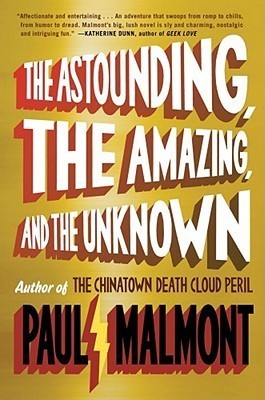What do you think?
Rate this book


434 pages, Kindle Edition
First published July 5, 2011
 Robert A. Heinlein - who wrote a large number of very popular science fiction stories and books, including The Roads Must Roll, The Green Hills of Earth, and Starship Troopers, is the leader of the group of scientist who are trying to make a ship disappear. He has a lot on his mind, with a hard drinking wife, the possibility that Nikolai Tesla may have managed to create a super weapon, and everyone trying to figure out why he quit writing for the pulps.
Robert A. Heinlein - who wrote a large number of very popular science fiction stories and books, including The Roads Must Roll, The Green Hills of Earth, and Starship Troopers, is the leader of the group of scientist who are trying to make a ship disappear. He has a lot on his mind, with a hard drinking wife, the possibility that Nikolai Tesla may have managed to create a super weapon, and everyone trying to figure out why he quit writing for the pulps. Isaac Asimov - who wrote the Foundation books and about robots. Working for Heinlein as his chemist, Asimov is trying to figure out the right formula for making a ship disappear from radar. Though newly married, he's finding more enjoyment writing his stories and running around with Heinlein and de Camp looking for super-weapons than spending time with his young wife, Gerti.
Isaac Asimov - who wrote the Foundation books and about robots. Working for Heinlein as his chemist, Asimov is trying to figure out the right formula for making a ship disappear from radar. Though newly married, he's finding more enjoyment writing his stories and running around with Heinlein and de Camp looking for super-weapons than spending time with his young wife, Gerti.  L. Sprague de Camp - who wrote a mix of science fiction and fantasy with his writing partner Fletcher Pratt, like the series of stories collected in
The Compleat Enchanter: The Magical Misadventures of Harold Shea
. His specialty is aeronautics, but in the book, he's just a good companion to have along.
L. Sprague de Camp - who wrote a mix of science fiction and fantasy with his writing partner Fletcher Pratt, like the series of stories collected in
The Compleat Enchanter: The Magical Misadventures of Harold Shea
. His specialty is aeronautics, but in the book, he's just a good companion to have along. L. Ron Hubbard - best known for starting a religion (Scientology) just sort of invites himself along for the ride, much to everyone's irritation. Still, Heinlein manages to put him to work and sends him off on a wild goose chase to the south pacific.
L. Ron Hubbard - best known for starting a religion (Scientology) just sort of invites himself along for the ride, much to everyone's irritation. Still, Heinlein manages to put him to work and sends him off on a wild goose chase to the south pacific.